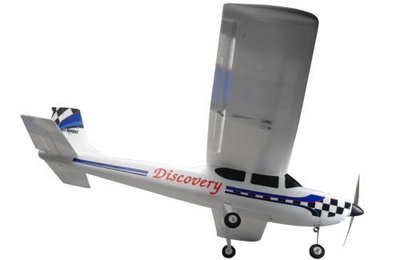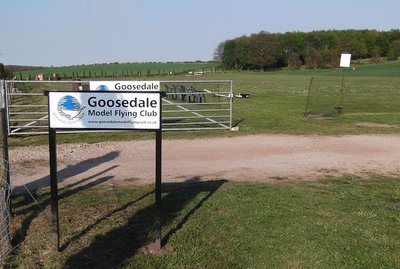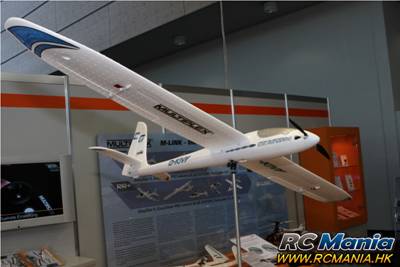Starting Out - I'm Confused!
- by Peter MoseleyWhat will it cost and what might I need?
Ask a dozen different RC pilots and you'll probably get 12 differing routes that you could take to get into RC model Planes.
Some will advocate the traditional values - the internal combustion engine as prime mover and built up balsa plane construction, while at the other end of the spectrum are electric powered planes - the simplest are just cut silhouette fashion from sheets of thin insulating foam.
One thing is clear - starting out, you need as much 'on your side' as possible and electric motors don't require any skill to start them and some foam planes - they might not look as pretty as the scale spitfire you had in mind, but they could be a whole lot easier to learn to fly on and be more forgiving of heavy landings than a balsa made plane. Best to buy the nice scale plane and nice sounding IC engine when you've got over the initial learning curve and 'got your wings'.
So, here is a list of items which could get you nicely into the hobby - as I say, ask enough pilots and you could make an infinite number of such lists...

Below listed - a trainer plane and all the bits and pieces needed to get you in the air with a good quality transmitter that can be 'slaved' to a club instructor's Spektrum transmitter for 'Dual Control' tuition.
The ST Discovery is a plane that is one of the best and most forgiving trainers, yet it's of sufficient weight to qualify for use in taking the nationally recognized 'A' Fixed Wing Certificate of basic flight competence. It is even mildly aerobatic, for when you've mastered those flight basics.
ST Discovery trainer plane complete with motor, ESC controller, servos, and propeller:
Kings Lynn Model Shop or Model Maniacs Online
About £110
Gens Ace 2200 25C 3S Lipo Battery - for in the plane to work the motor and receiver and servos:
Example purchase from eBay
About £20 as of June 2015
GT Power A606 Dual Charger for charging LiPo and NiMh batteries from either mains or 12v car battery source.
Charger
About £54 as of June 2015
Four 2000mAh NiMh AA rechargable batteries - Eneloop are best as once charged, their 'on shelf' discharge rate is extremely low.
Component Shop
£2.35 each as of June 2015
Spektrum DX6i DSMX 2.4Ghz 6 Channel Transmitter
Note - most people fly what is called a Mode 2 transmitter setup, so when ordering your transmitter it might be wise to order a Mode 2 version.
Mode 2 is:
- Left Stick: Vertical=Throttle and Horizontal=Rudder
- Right Stick: Vertical=Elevator and Horizontal=Aileron
£79.99 as of June 2015
Spektrum AR400 4 Channel Full Range Receiver
£19.99 as of June 2015
(Or you could buy the slightly more expensive AR600 6 channel receiver, so it could be moved, at a later date, to a more advanced plane which may also have retractable undercarriage and / or flaps)
The above would be a good starting out setup - prices and links current as of June 2015.
And totals at around £250 ... plus of course there would be a few more pounds for the various post and packing charges.
Then you need insurance cover by joining the BMFA - British Model Flying Association
BMFA Join / Renew Page
Please follow that link (new tab) for pricing details
And to join a Model Flying Club for advice, flight tuition, like minded colleagues and somewhere to fly: Goosedale Model Flying Club Join / Contacts page - Please follow that link for up-to-date pricing information.
So all of that comes to a grand total, for plane, motor, motor controller, servos, batteries, Transmitter and Receiver, BMFA and Goosedale MFC membership - around £350 for an adult or £280 for a junior.
And here's a You Tube clip of the ST Discovery - just to show, that what is a very steady and stable trainer, in the hands of a good pilot and on full throttle - it's quite a capable plane.
A look at a few more electric motor powered trainers:
Marionville Models
RC Model Centre UK
I recommend you don't buy a trainer plane that comes with a transmitter and receiver included in the kit - the transmitter and receiver included in these tend to be at the cheap end of the range of radio gear, lacking some of the functions which are now becoming regarded as standard, plus they usually only have 4 channels. Yes, if your plane only has controls on throttle, rudder, elevator and aileron, then 4 channels is all you require, but just think - let's assume at some time you buy a 2nd plane - it might have flaps and/or retractable undercarriage, in which case it will require a 5 or 6 channel receiver and if you'd started out with a 6 channel transmitter that would be fine to control your 2nd plane ok, but a 4 channel one - it just wont do. You'd have to buy another transmitter.
Also, transmitters have a memory to remember all the setups for a particular aircraft - they remember settings like how much is the full movement of the rudder or the elevator. The ones that come, as a package with a plane - for cheapness, they tend to only have one model memory, so you would have to keep changing the setups as you went from using it to fly one plane to flying another - believe me - most annoying.
Another point - the cheap transmitters often wont be compatible with buddying up to an instructor's transmitter - to give, in effect, dual controls.
At Goosedale Model Flying Club, for safety, we insist on trainee pilots starting out by buddying their transmitter to that of an instructor.
Note, whatever make of transmitter you go for - then all of the receivers for all of your planes need to be of that make, too. So if you have a 2.4ghz Spektrum transmitter, then all of your 2.4ghz receivers need to be made by Spektrum too. If your transmitter is Futaba then all of your receivers need to be Futaba, even though they might also be 2.4ghz. That's because the manufacturers use their own specific coding for the control signals which they put out in the 2.4ghz radio band signal.
Additionally, most people fly what is called a Mode 2 setup on their transmitters, so when ordering your transmitter it might be wise to order a Mode 2 version.
Mode 2 is:
- Left Stick: Vertical=Throttle & Horizontal=Rudder
- Right Stick: Vertical=Elevator & Horizontal=Aileron

As I said, unlike an Internal combustion engine, electric motors don't require any skill to start them and are thus one less thing to have to learn about.
And when 'starting out' you have 'enough on your plate' just learning about the aspects of flight control, so at the start electric is the easier option.
At Goosedale Model Flying Club, IC engines can only fly from 11:00am to 5:30pm, but quiet electric can fly on until 7:45pm.
In the summer months, for those starting out who are not retired and so have to work Monday to Friday - choosing quiet electric could enable them to organise early evening, after work training sessions with a club instructor... that way, they get a bit more practice in than just being limited to weekend flying.
Quiet electric, by the way, is typically an electric motor powered plane, or helicopter, that isn't going to disturb people a quarter of a mile away who are sitting in their back gardens on a summers evening. So the ST Discovery is fine, as are the numerous electric powered gliders like the Easystar and Clouds Fly and Bixler. What is likely to be too noisy, though, are ducted fan electric planes and some Depron foam planes with very high revving motors - these can be just a bit too raucous.
And now there's the improved Bixler 2 - another ideal beginner's plane available from:
Bixler 2
and this kit version, to complete it, is going to need:
- 1 x 26 to 28 Size 1300kv Brushless Motor
- 1 x 20Amp to 30Amp ESC (electronic speed controller)
- Transmitter and Reciever which has a minimum of 4 channels
- 1800mAh to 2200mAh 3s (battery comprising 3 series wired cells) Lipo Battery - best to buy a couple of these - powers the plane's motor and receiver and servos via the ESC.
- 4 of 9gram weight Servos for Ailerons, Elevator and Rudder
- 2 of 9g Servos For Flaps (Optional) if you wish to activate the flaps
- 1 x Servo Reverser lead if using optional flaps with a non-computer radio
- Battery charger suitable for charging Lipo batteries.
Here is a Bixler 2 review on YouTube:
Or how about starting with a Glider powered by an electric motor?
These represent an excellent alternative way into the hobby. Their large wings give great presence in the air and can allow slow airspeeds giving the beginner plenty of thinking time. The EasyGliderPro is no slouch though and can be throttled up to give a sparkling performance and aerobatics too - that is, when you've mastered the basics.
So many beginner's gliders don't have ailerons, which tends to make turns sluggish to execute on just the rudder, but the EasyGliderPro is fitted with ailerons, so you have a plane which is very responsive:
EasyGlider Pro
About £75 as of June 2015

Return to Articles Home
